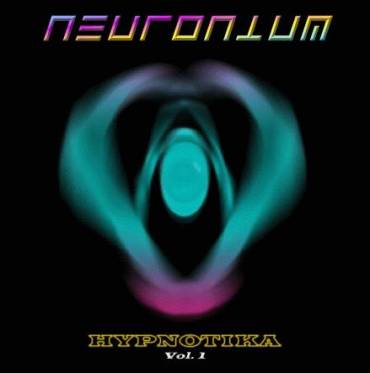HYPNOTIKA,
THE AUDIOVISUAL WORLD OF
![]()
![]()
HYPNOTIKA,
THE AUDIOVISUAL WORLD OF

By Jorge Munnshe
Michel Huygen (founder of Neuronium) and painter Tomás Gilsanz (author of the images that at times have accompanied the concerts of Neuronium, and the creator of some of the album covers of the band) have joined their talents to create a spectacular audiovisual CDROM, "Hypnotika Vol.1", recently released in a restricted distribution and with only a thousand copies, under the name of Neuronium and released by the label Oniria International. Michel Huygen has told us about this project during an interview.
Since the
beginnings of electronic music and specially space
music, many have been the followers who are convinced about the
additional impact that this kind of musics
has when they are complemented with the adequate images. If a
composition suggests
us a journey through unearthly universes, that sensation will be
enhanced if besides listening to the music we see the landscapes
that such a journey could bring to our eyes. The music videos visually
based upon that kind of images are scarce.
Most just gather live performances with a few surrealist images
intertwined with the
live takes. This is why, when an audiovisual work whose space character
includes
both the music and the image appears, this no doubt attracts the
attention of the
followers of avantgarde art.
"Alienikon" and "Aeternitas" are two movies (lasting about twenty
minutes each), based on this concept. Huygen and Gilsanz respectively
take care of the sound and the image.
 The
animations have been created by Gilsanz from paintings of his
digitalized by himself. All kinds of visual effects scroll one after
another. Landscapes passing before our eyes as if we were overflying
them. Supernatural apparitions. Ghosthly metamorphoses. Wondrous worlds
alien to anything known. And other effects hardly describable with mere
words. Gilsanz knows how to play with psychology linked to visual
perception. He makes, so to speak, us see the invisible, tricks us with
his pictorial magic making us perceive things contrary to the laws of
physics that govern the behavior of light as well as our perception of
it.
The
animations have been created by Gilsanz from paintings of his
digitalized by himself. All kinds of visual effects scroll one after
another. Landscapes passing before our eyes as if we were overflying
them. Supernatural apparitions. Ghosthly metamorphoses. Wondrous worlds
alien to anything known. And other effects hardly describable with mere
words. Gilsanz knows how to play with psychology linked to visual
perception. He makes, so to speak, us see the invisible, tricks us with
his pictorial magic making us perceive things contrary to the laws of
physics that govern the behavior of light as well as our perception of
it.
The nature of the visual content of these two movies has a strong
mystic component. The supernatural is present in almost all the
sequences. The textures are oniric, as if the animations were the brain
recordings of dreams. There also are remarkable psychedelic touches.
 Michel
once again impresses us with his graphic design for the cover of the
CDROM. An enigmatic figure of icy tones and diffused contours, as if it
were the gas of a nebula, presides the front cover over a black
background. As in other visual creations of his, Huygen transmits some
very definite meanings, yet he also deliberately leaves an open door to
the imagination of the observer. In the first instance, he has
re-created with great subtlety two arms that shake hands around a
beating heart, while at the same time the entire design presents the
aspect of a spaceship. In the second instance, as many things as the
imagination of a person is able to produce can be likewise seen. An
alien face, the head of a magic serpent, the arm of a ghostly old
record player,or a supernatural lamp whose bulb emits spiritual light,
are some of the uncountable interpretations that can stem from this
image. The symbol in question is bound to become an insignia for the
oniric worlds of Michel Huygen since, as he tells us, he is planning to
use it as a logo for future releases.
Michel
once again impresses us with his graphic design for the cover of the
CDROM. An enigmatic figure of icy tones and diffused contours, as if it
were the gas of a nebula, presides the front cover over a black
background. As in other visual creations of his, Huygen transmits some
very definite meanings, yet he also deliberately leaves an open door to
the imagination of the observer. In the first instance, he has
re-created with great subtlety two arms that shake hands around a
beating heart, while at the same time the entire design presents the
aspect of a spaceship. In the second instance, as many things as the
imagination of a person is able to produce can be likewise seen. An
alien face, the head of a magic serpent, the arm of a ghostly old
record player,or a supernatural lamp whose bulb emits spiritual light,
are some of the uncountable interpretations that can stem from this
image. The symbol in question is bound to become an insignia for the
oniric worlds of Michel Huygen since, as he tells us, he is planning to
use it as a logo for future releases.
More info, here